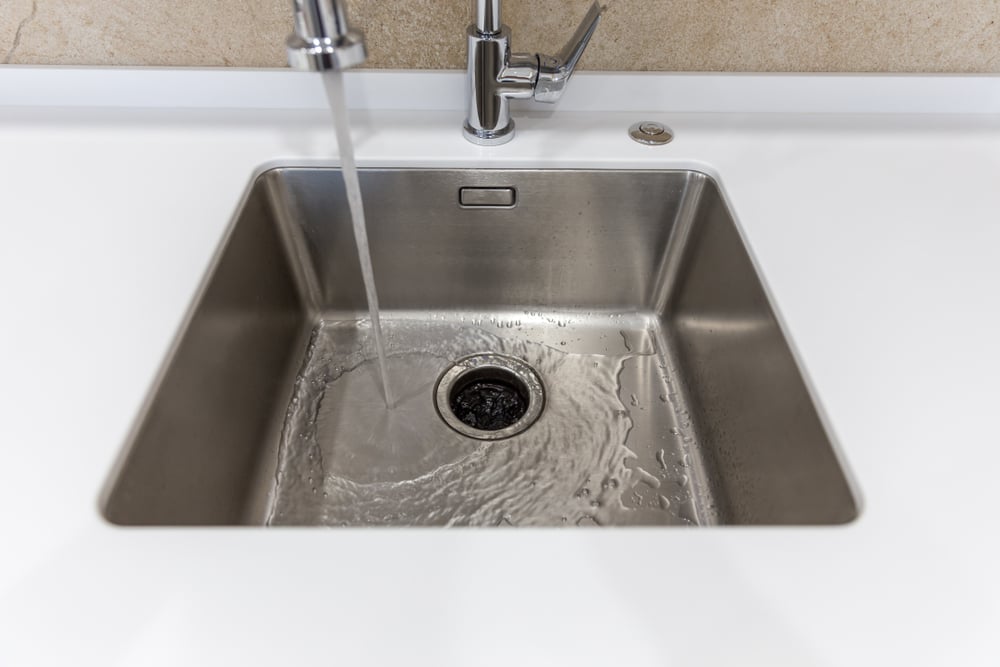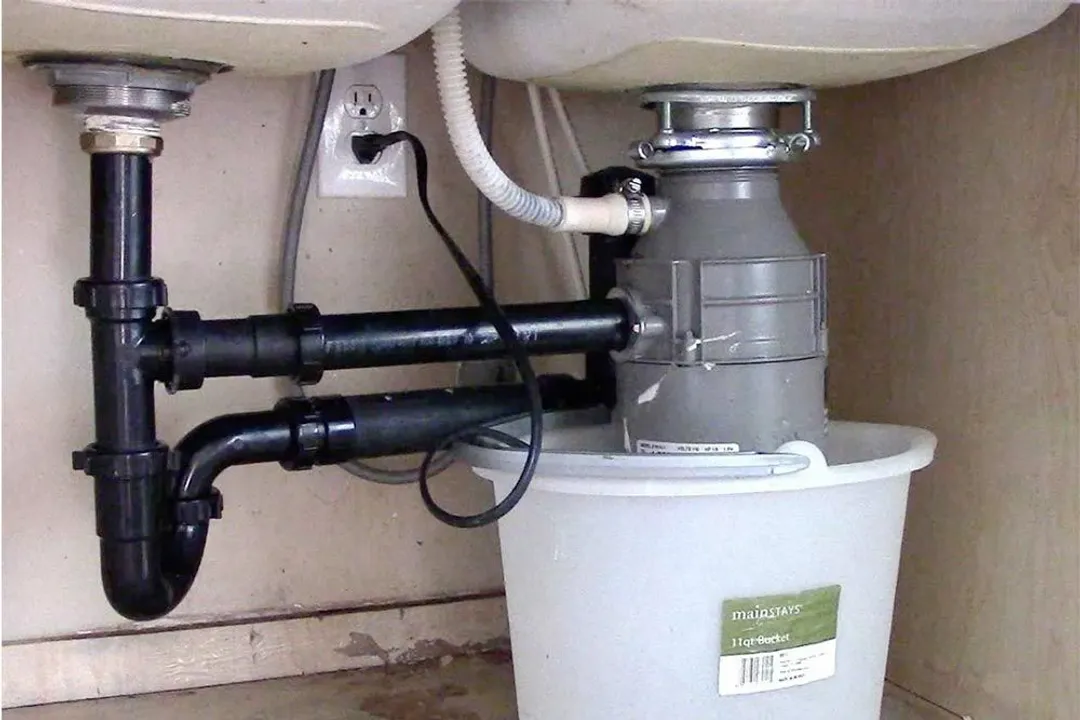Best Tips for Fixing a Leaking Waste Disposal Unit
Best Tips for Fixing a Leaking Waste Disposal Unit
Blog Article
What're your opinions regarding The Handy Guide To Fixing Your Garbage Disposal Leaking?

Garbage disposals are necessary kitchen appliances that assist in dealing with food waste successfully. Nonetheless, a leaking garbage disposal can be an aggravating and untidy issue to take care of. The good news is, several leaks can be taken care of quickly with a few simple steps. In this article, we will certainly review just how to deal with a dripping garbage disposal efficiently.
Introduction
Waste disposal unit are mounted under kitchen area sinks and are made to shred food waste right into smaller items, allowing it to go through the plumbing system easily. While these devices are generally dependable, leaks can occur with time as a result of deterioration, loosened connections, or damages to the system.
Step-by-Step Guide to Taking Care Of a Leaking Waste Disposal Unit
Switch off the Power
Before trying any fixings, guarantee that the power to the waste disposal unit unit is shut off to stop the risk of electrical shock.
Situate the Leakage
Recognize the exact place of the leakage and establish the cause
Tighten Links
Make use of a wrench to tighten up any loose connections between the disposal device and the plumbing system.
Replace Seals or Gaskets
If the leak is because of worn seals or gaskets, eliminate the old elements and change them with brand-new ones.
Patching Splits or Openings
For splits or openings in the disposal unit, use epoxy or a suitable patching product to secure the broken location.
Determining the Source of the Leak
Before attempting to fix a dripping waste disposal unit, it is essential to recognize the resource of the leak. This can generally be done through aesthetic assessment or by carrying out easy tests.
Visual Examination
Inspect the waste disposal unit system carefully for any kind of indications of water leak. Pay very close attention to areas around seals, gaskets, and connection points.
Testing for Leakages
One way to test for leaks is by running water with the disposal unit and looking for any noticeable signs of leakage.
Usual Root Causes Of Leaks in Trash Disposals
Worn Seals and Gaskets
Seals and gaskets play an essential function in preventing water from leaking out of the waste disposal unit. With time, these components can weaken, bring about leakages around the disposal unit.
Loose Connections
The connections in between the waste disposal unit and the pipes system can come to be loose over time, causing water to leak out during operation.
Cracks or Holes in the Disposal System
Physical damages to the waste disposal unit, such as fractures or holes in the housing, can likewise result in leaks.
Tools and Products Needed for Dealing With a Dripping Waste Disposal Unit
Prior to starting the repair service process, gather the essential devices and materials, including a screwdriver, flexible wrench, plumbing professional's putty, substitute seals or gaskets, and epoxy or patching product for repairing splits or openings.
Evaluating the Waste Disposal Unit After Repair Service
Once the fixing is total, test the waste disposal unit by running water through it to ensure that the leakage has actually been fixed.
Preventive Maintenance Tips to Prevent Future Leakages
To avoid future leakages, it is necessary to do regular maintenance on your garbage disposal. This includes maintaining it tidy, avoiding placing non-food things or hard items down the disposal, and occasionally looking for leaks or various other problems.
Verdict
In conclusion, repairing a leaking waste disposal unit is a reasonably straightforward procedure that can be finished with fundamental devices and materials. By following the steps described in this short article and practicing precautionary maintenance, you can keep your garbage disposal in good working condition and stay clear of pricey fixings in the future.
What to Do About a Leaking Garbage Disposal
A leaking garbage disposal often goes unnoticed until you confront a sopping cabinet, a foul-smelling puddle, or an audible drip-drip-drip from the unit. The fix can be frustrating, too, because the leak can stem from a number of components in the system. Fortunately, with a little sleuthing, you can zero in on the leak and—depending on the exact location—stop the icky oozing and repair the component that caused it. Worst case scenario, if it turns out that the garbage disposal must be replaced, installing a new one is a reasonable do-it-yourself task for those with basic plumbing skills. Read on to keep the cash you’d otherwise hand over to a pro.
Prepare to find the leak
Prior to testing the garbage disposal for leaks, unplug it at the wall outlet and turn off the power from the breaker box to prevent electrical shock. Then insert a watertight sink stopper into your sink drain and wipe the unit dry with a clean cloth. In any handy container, mix a few drops of food coloring into a few cups of water, and pour the dyed water onto the sink stopper to help you locate the leak.
Investigate the source
the top, where the disposal meets the sink drain the side, where the dishwasher hose or main drain pipe connects to the disposal or the bottom of the unit Inspect each of these locations while gliding a light-colored rag over the unit; the dyed water will readily show on the rag and reveal the location of the leak. If a leak isn’t immediately apparent, remove the sink stopper and pour a few more cups of dyed water down the sink drain, then check for leaks again. Leaks near the top of the unit are more likely to show themselves while the sink is plugged, while side and bottom leaks are more noticeable while the sink is unplugged.
The metal sink flange that sits directly inside the sink drain is typically sealed around the top with plumber’s putty (a clay-like sealant) and then secured from under the sink with bolts. If the plumber’s putty deteriorates, or the bolts loosen, the flange can no longer form a watertight seal between the sink drain and the disposal—which could cause a leak at the top of the unit.
To reseal the leaky flange, you must first detach the garbage disposal. Start by loosening the screws securing the main drain pipe to the disposal, then loosen the screws in the metal clamp securing the dishwasher hose to the disposal and detach the drain pipe and dishwasher hose from the disposal. Loosen the screws in the mounting ring that connects the disposal to the metal mounting assembly beneath the sink, then pull down the disposal and carefully set it on a clean, dry surface. Loosen the bolts in the mounting assembly with a wrench, then pull down the mounting assembly and set it near the disposal.

I have been very fascinated with The Handy Guide To Fixing Your Garbage Disposal Leaking and I am assuming you liked our blog entry. Loved our blog posting? Please share it. Let someone else find it. Thank you so much for going through it.
Book Your Installation Report this page